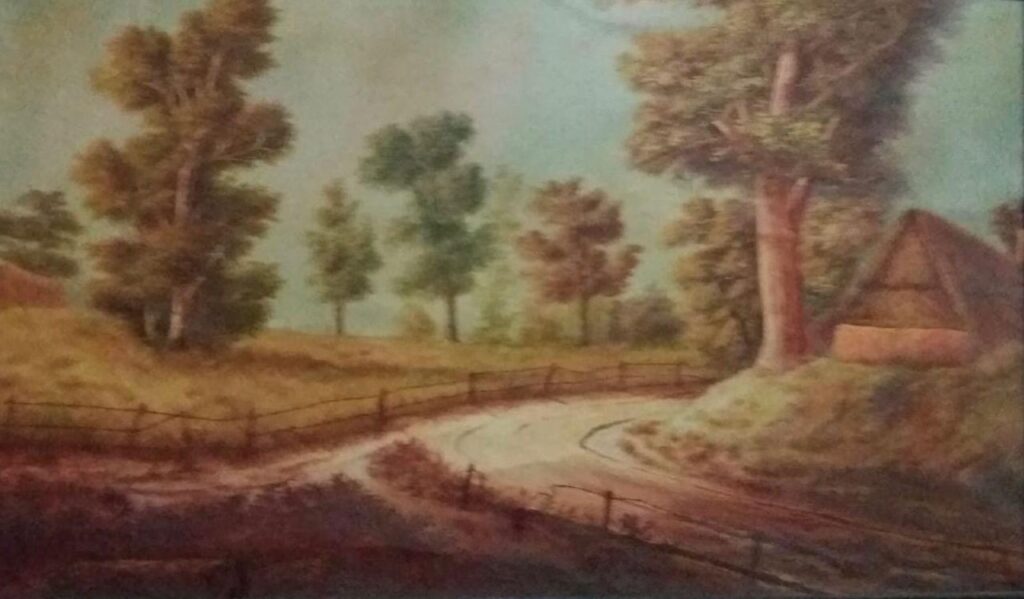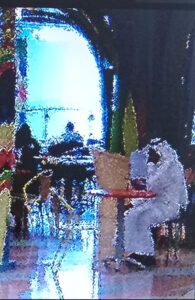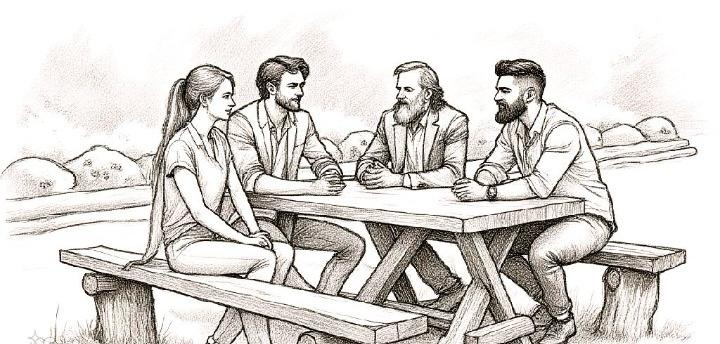The debate on AI art is creating waves. Is AI another tool in the hand of an artist? Or a magic wand for exploiters to entrance the unwary public? A dialogue among four friends tries to unravel the tangle of conflicting views on the subject. Jane is an accomplished artist, Romail, an AI expert, Peter, an art lover and Jabran, a renowned art critic. Let us see what is their take.
Peter: Look at this painting, or whatever it is. There are 100,000 likes online within a few days. Am I blind to what enthralls so many people? Or the-so-many-people are blinded by the razzle dazzle of technology?
Jane: It is hardly amusing. A prompt typed in an algorithm churns out something and people swoon. Where’s the hand, the years of toil, learning, discipline? The art is being rudely pushed aside. Cosmetics replacing the finer aspects of life. It’s a pity.
Romail: Art isn’t only about skill. It’s more about imagination.
Jabran: The intellectual depth. The capacity to analyse the subject and synthesize new reality.
Romail: Precisely. If someone has the artistic insight but not the skill, or access to materials, should he be denied the right to express himself?
Stephen Hawking is the case in point. A brilliant mind but unable to move a muscle. Yet with the aid of technology he unravels the mysteries of the universe. Should we deny a similar opportunity to a person with artistic tendencies but not the capacity to handle a brush?

Jane: I can’t help recalling Auguste Renour. In his later years, he suffered from crippling arthritis and couldn’t hold a brush which had to be tied to his hand. Art isn’t just formed in the mind, Romail. It happens in the hands. It’s born while doing, while making mistakes, while discovering things you didn’t even think of. A smudge becomes a shadow. A mistake becomes a breakthrough. I once accidentally spilled turpentine on an almost finished painting. I can’t describe the shock of happiness. The original theme was ruined. But what emerged from the chaos was breadth taking. It was a great learning experience. Later I applied this technique in a controlled manner and produced spectacular results.
Romail: Trust me Jane. Guided by your instructions, AI can mimic that randomness. It can give you a range of happy accidents to choose from. AI cannot replace the artist. It challenges him to evolve.
Peter: But what about the public? People hardly care about the story or struggle of the artist. They’re drawn to what looks good, eye-catching. AI can make non-art look fantastic just through superficial beauty. And that’s scary. Glamor winning over creativity. Beauty eclipsed by decoration.
Jane: Exactly. The real artists, the quiet, reflective ones may be sidelined. Not every artist can yell over the noise.
Jabran: Coming from a student of art history, it’s a bit surprising. You have seen this pattern before. Again and again across centuries. The invention of photography in the 19th century sparked the same concerns. Realist painters suddenly felt obsolete. But what did they do? They invented Impressionism. Romanticism and Symbolism followed. Art adapted. Photography challenged the traditional role of the artist. Who was obsessed with realistic depiction of the subject within the bounds of history and religion.
Romail: Camera didn’t kill the artist. It was a blessing in disguise. It helped the artist to break away from the shackles of self doubt.
Jabran: The artist discovered that making a slavish copy of nature wasn’t really art. The mindless camera could do that in a much better way. The role of the artist was to interpret nature. The impressionists did just that. They overcame limiting beliefs and took bold steps. The focus shifted from form and resemblance to light and color.
Jane: The Industrial Revolution was also a massive disruption.
Jabran: Yes. It changed society and with it, the themes, pace, and purpose of art. The Industrial Revolution also had a role in shaping Impressionism. And let’s not forget the world wars. Millions dead. Particularly in Russia. The trauma gave birth to Constructivism, Suprematism. Art no longer painted beauty. It screamed for survival.
Romail: AI is just the latest disruption in a long chain.
Peter: It sure is faster. Overpowering.
Jabran: It’s different in scale and speed, yes. But not in essence. Every disruptive event, be it war, technology or ideology, initially seems like an injustice to the existing order. But art has a remarkable capacity of absorbing disruption. A new consensus eventually emerges. Coexistence prevails.
Jane: But isn’t something lost in the process? Soul? Authenticity? Originality?

Jabran: Maybe in the short run. But not forever. Remember, many dismissed Picasso when he fragmented faces. They called it child’s play. Now we see it as genius. The same is eventually going to happen with AI art. It would go through a phase of hollow imitation. But the deeper, more meaningful uses will emerge in time. Especially when thoughtful artists, like you Jane, engage instead of resisting it.
Romail: That’s what I’ve been trying to say. AI isn’t replacing the artist. It is modifying certain tasks. The intellect, emotion, and philosophy are still human.

Jane: I understand. But emotionally, it feels unfair. The bar has shifted. The brilliant artist who can’t promote themselves online or who lacks the aggressive confidence to assert his voice, may never be seen. It’s a battlefield now, not a gallery.
Peter: And people, like me, the audience are dazzled by the spectacle. By the perfect lighting, color harmony, balance, vibrancy. We might not know we’re praising surface over soul.
Jabran: Then perhaps this moment is also a test of discernment. Not just for artists, but for critics, viewers, institutions. Art movements have always been shaped by those who had the power to see. We must train ourselves again to seek meaning, not just gloss.
Jane: So you’re saying I should keep creating, with or without AI. That, in time, the dust will settle.
Jabran: Exactly. The storm will pass. A new vocabulary of art will emerge. And those who have something to say, not just something to show, will still matter. Jane knows it more than all of us. In the beginning, the majority public is always enthralled by cheap, loud, pseudo art. What eventually kills pseudo art is its abundance and cheap availability.
Romail: Well said. And perhaps the mistake is thinking it’s either/or. Maybe it’s both. Art from hand, and art from code. Brush and stylus, side by side.
Peter: I like that. A coexistence. Let’s hope the soul speaks louder than the sparkle.
By: James Kell.



